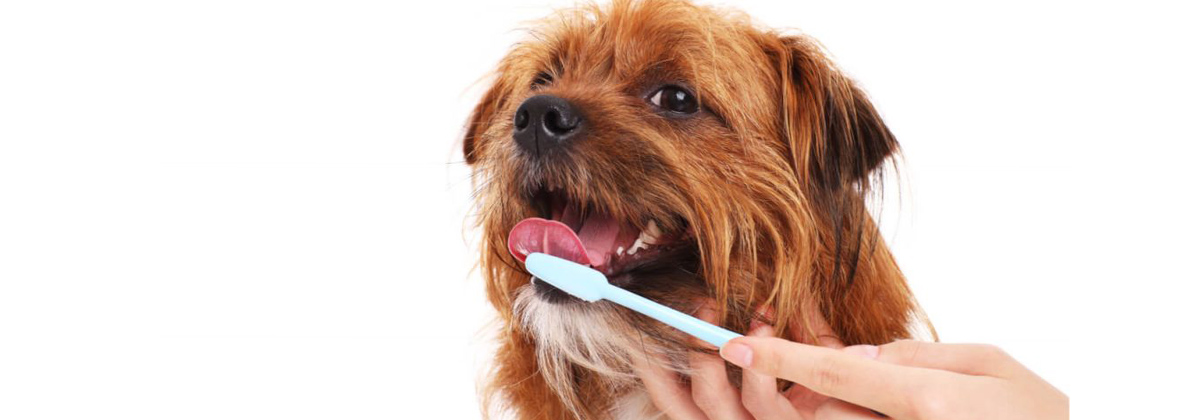08 Jan How to Brush Your Dog’s Teeth (Part 2)
We explained brushing a dog’s teeth and its importance in the first part. Dogs need to be accustomed to brushing from an early age, or they will develop periodontal disease or gingivitis. Plaque also causes bad breath, gum disease and tooth decay. We have already explained the best time, number and duration of brushing. To start, we had to follow a few tips. One of them is having a proper toothbrush. This section will talk about the right toothpaste, baking soda, the best position for brushing, preparing the gums and the toothbrush, circular motions, and focusing on the dental plaque.
Suitable toothpaste for brushing dog’s teeth
Human toothpaste contains substances that dogs shouldn’t swallow. If a dog eats toothpaste, it may cause stomach upset or indigestion. Some human toothpaste also contains sodium, which can make your dog sick. In cleaning dog teeth, it’s necessary to use dog toothpaste; this substance is present in flavours that dogs like, such as chicken or peanut butter.
Using baking soda for cleaning dog’s teeth
Baking soda is an alkaline substance. If it enters the dog’s body, it can upset stomach acid balance and the dog’s digestive system. Baking soda also doesn’t taste good and may make brushing a bitter experience for dogs.
The best position for brushing
Make sure you are in a position where your dog is comfortable. Don’t stand on top of your dog or take a threatening place to hold him. Instead, try to kneel and sit in front of or next to him, measuring your dog’s level of anxiety. If he seems upset, stop cleaning your dog’s teeth and try again later. You may need to work on any of the following steps over time. It may even take up to 10 days.
Preparing the gums
Try rubbing your dog’s gums and upper teeth to get him to touch his mouth. To begin, draw a soft cloth on the outer surface of the dog’s teeth. Be careful to rub only on the teeth outer surface at this stage. When you feel your dog is comfortable brushing his teeth, let him taste some dog toothpaste. Apply some dog toothpaste on your fingertip. Let your dog lick the toothpaste from your fingers so he can get used to its taste. Try another flavour if he refuses to lick more toothpaste after a few days. Now that you understand your dog has no problem with the taste of toothpaste apply a small amount of it on the cloth and apply it on the dog’s teeth. Once your dog is used to brushing his teeth with a cloth, it’s time to use the dog’s toothbrush.
Trying a dog’s toothbrush.
When your puppy gets used to opening his mouth, and you touch his mouth, start using toothpaste and toothbrush together. Lift her upper lip. As you approach his teeth with a toothbrush, angle the toothbrush 45 degrees to reach the gum line. Brushing at a 45-degree angle helps massage the gum line and remove plaque around the dog’s teeth. Put your free hand on the dog’s head to have better balance and concentration. You should open the dog’s mouth to brush the dog’s lower teeth. Bending the dog’s head can help. Start brushing your dog with his large teeth and eventually brush his smaller one. Don’t worry about the tip or the inside of the tooth; gum disease and tooth decay are more common on the teeth outer surfaces.
Use circular movements for cleaning the dog’s teeth.
Brush in small circles up and down. When you move the toothbrush bristles along the gum line, there may be some bleeding. A minor bleeding every once in a while isn’t a problem. But persistent or heavy bleeding may mean brushing too much or a sign of gum disease. Talk to your veterinarian for advice.
Focus on dog’s dental plaque
Try to brush a few teeth at a time and work on more each day, taking a total of two minutes to brush. If your dog resists at first, try starting from the outside of the dog’s teeth and the back of the tooth, where plaque tends to shrink. Great if you can get inside your mouth, but if you can’t, don’t put too much stress on your dog. His large tongue helps keep the inside of his mouth cleaner.




Sorry, the comment form is closed at this time.